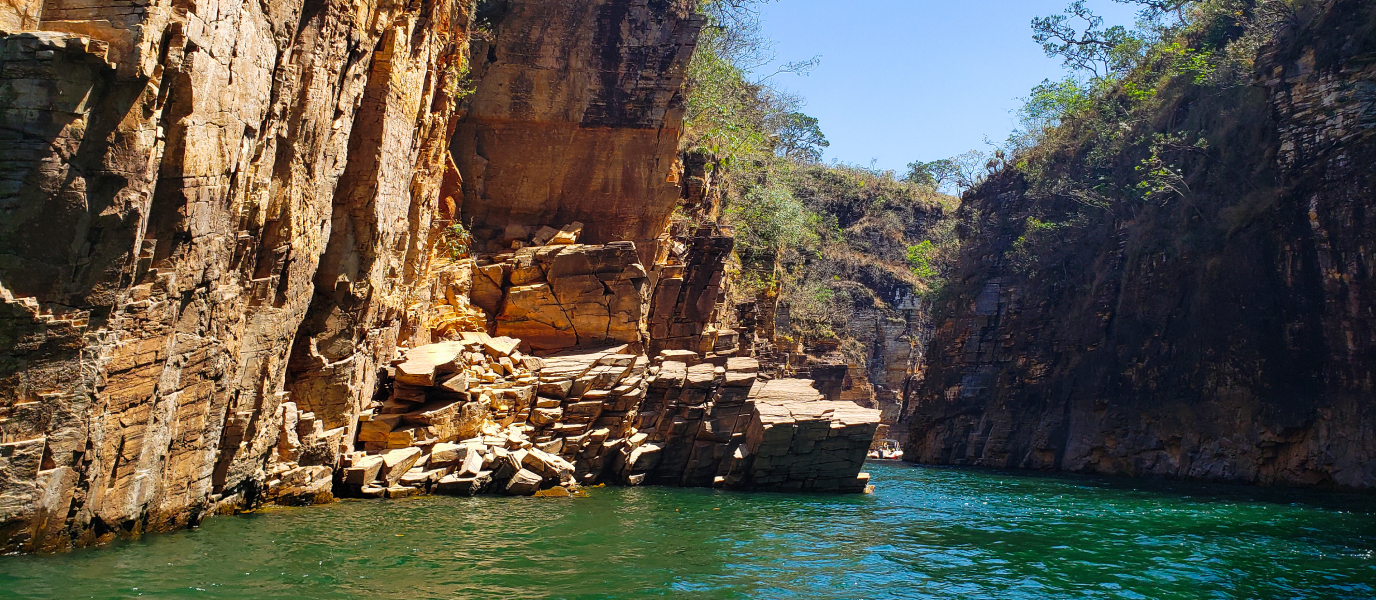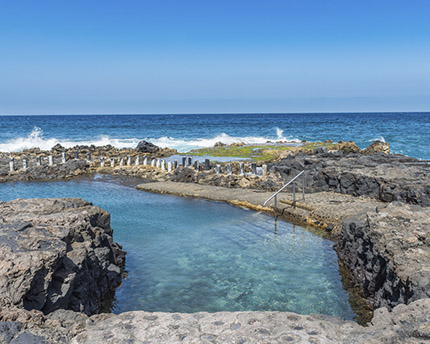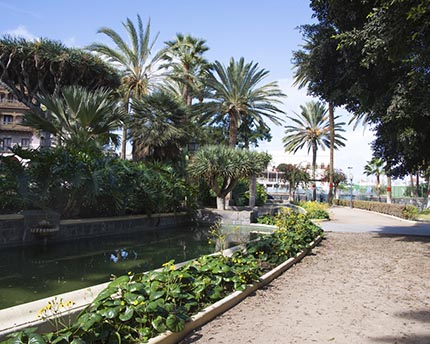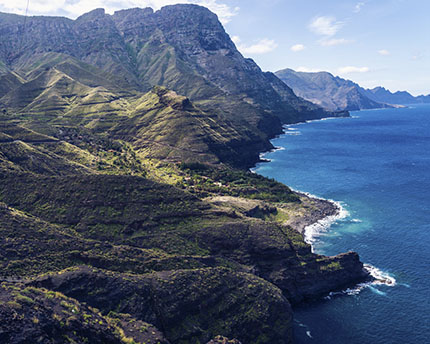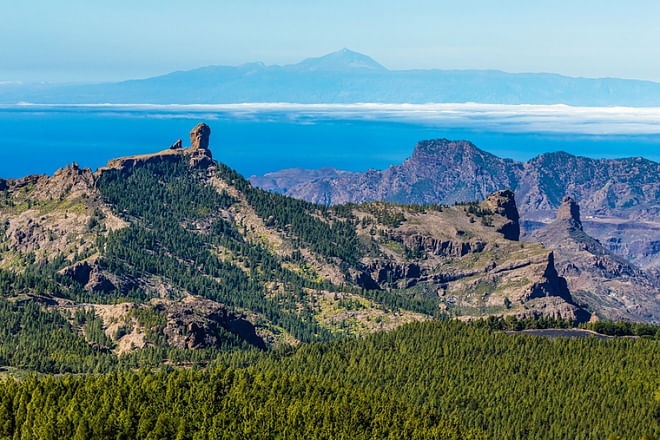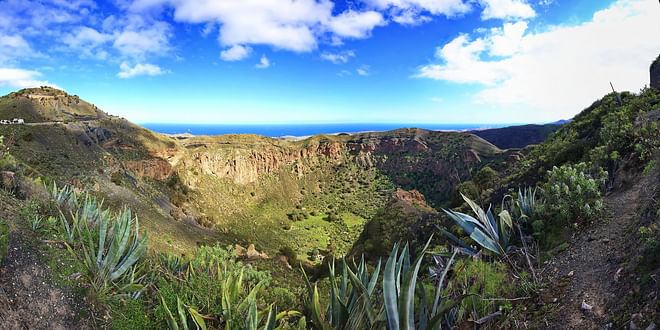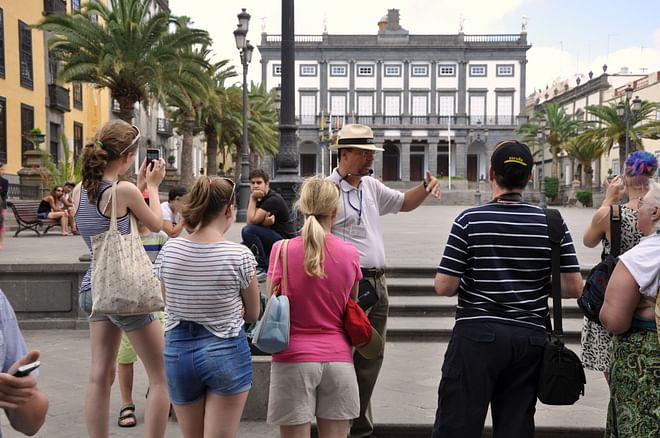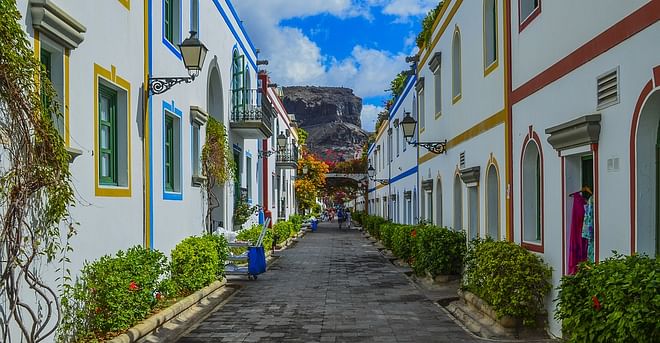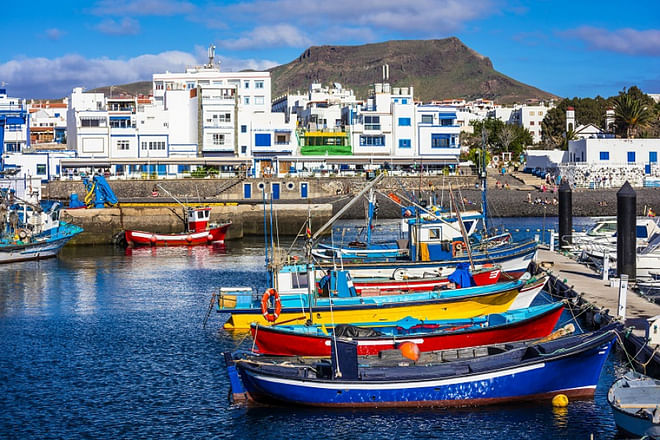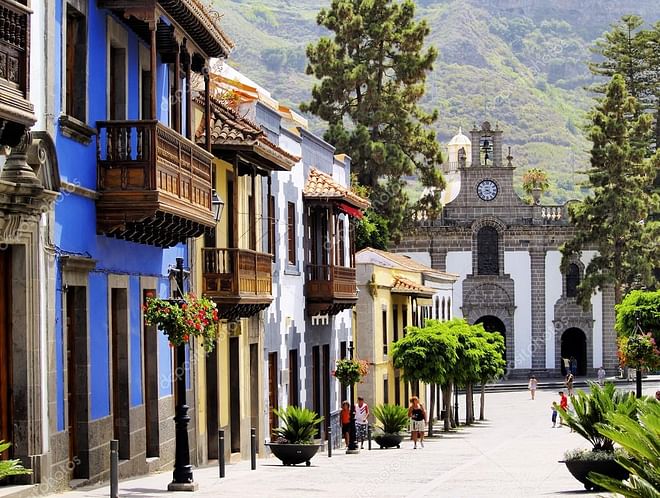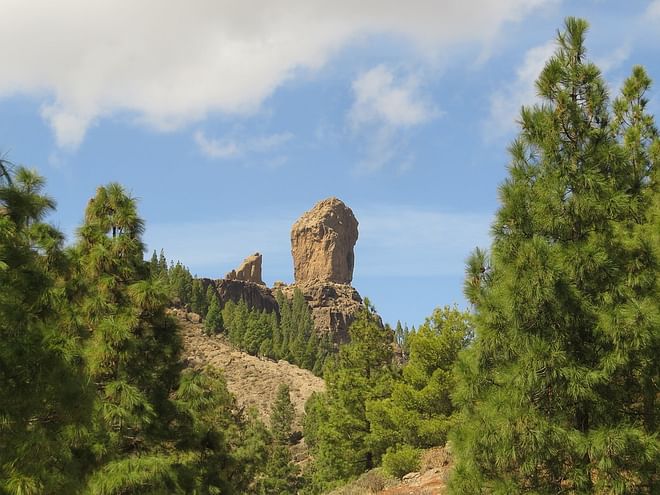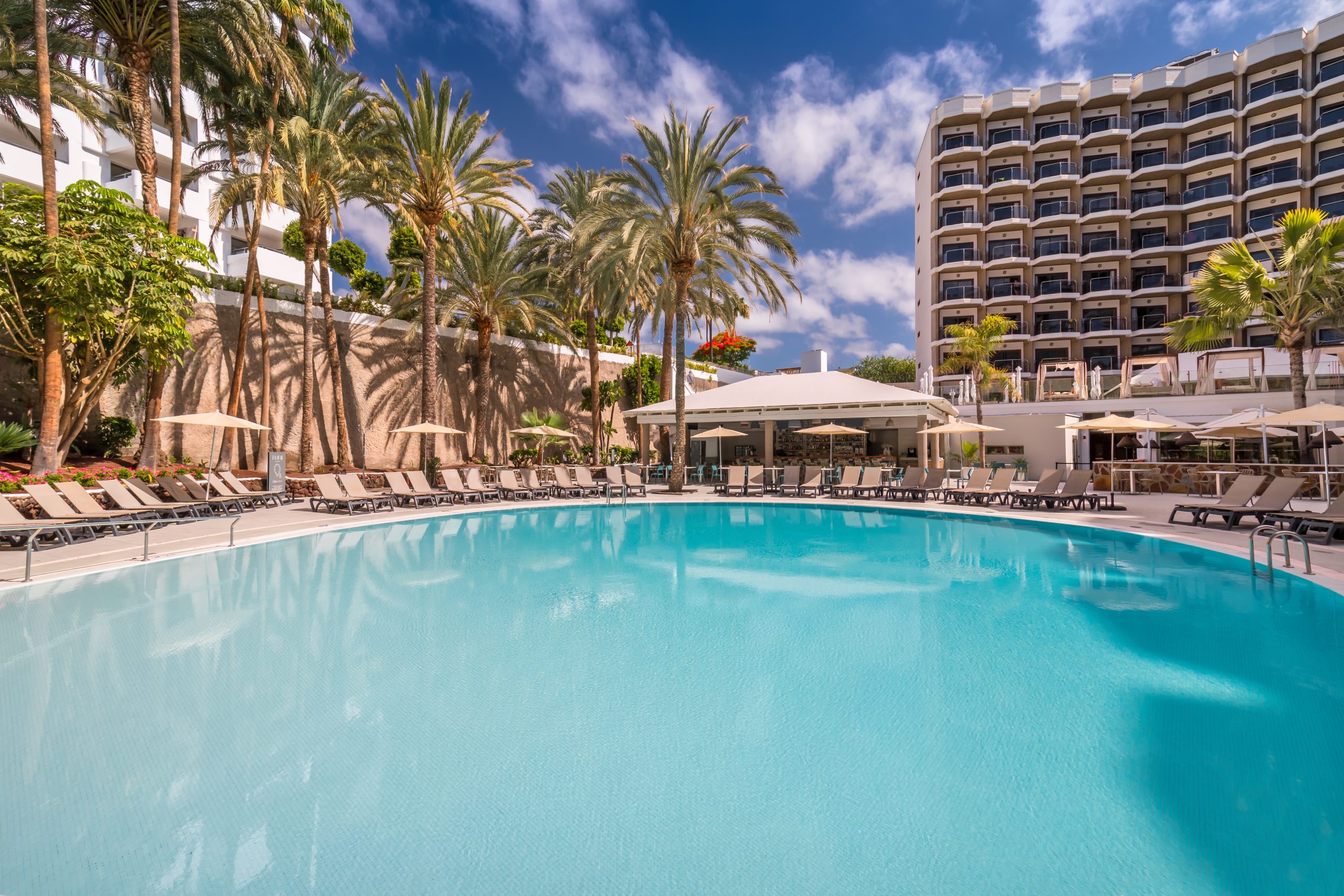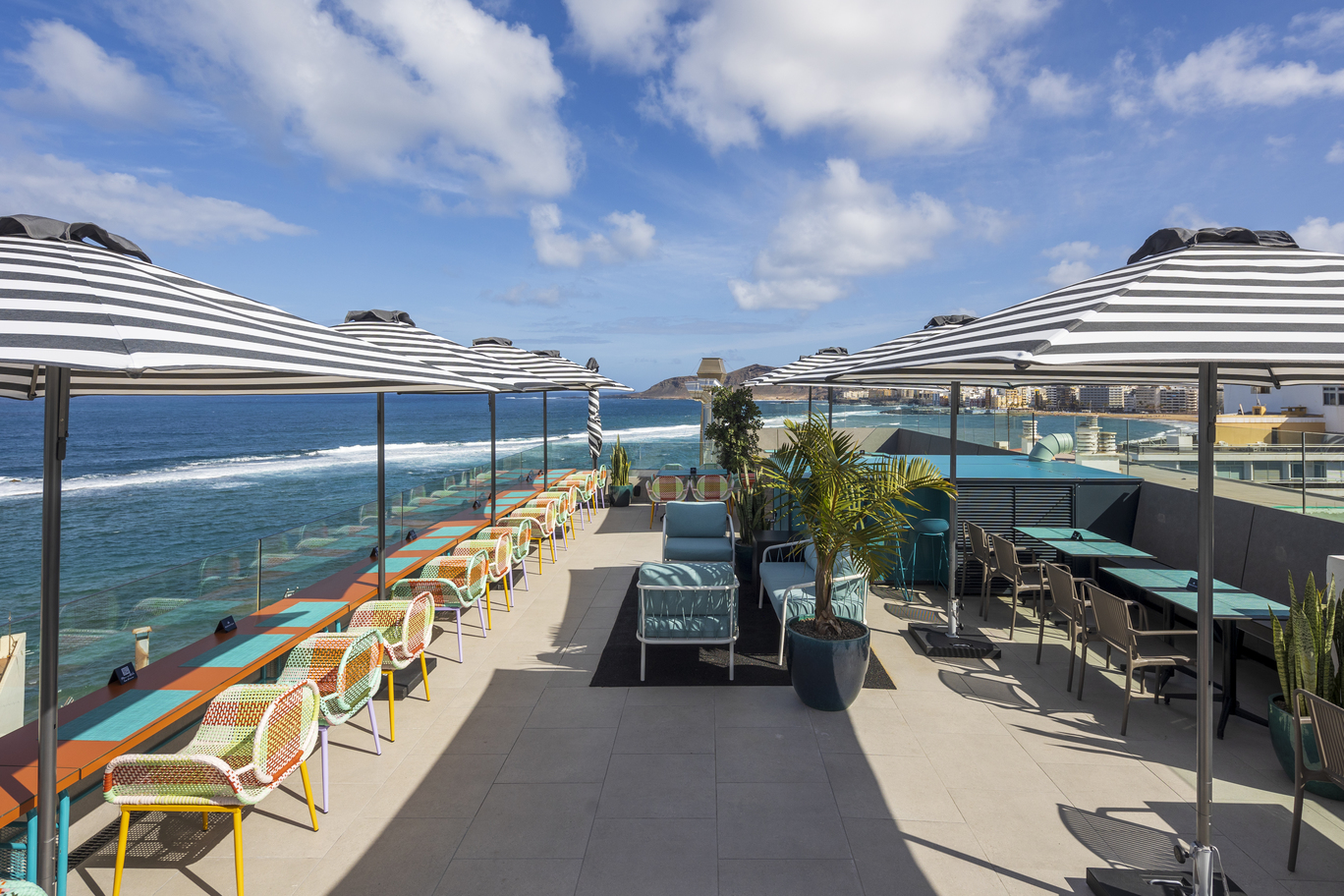The 15-km long Guayadeque Ravine snakes its way through the volcanic crust of Gran Canaria and runs right up to the eastern coast. This unique natural monument, with soaring walls of rock, covered in entangled endemic vegetation, provides a glimpse at the way of life of the indigenous tribes of the island before the conquista. Cave dwellings and archaeological sites lie beside homes, and picturesque hotels and restaurants built directly into the rock.
Guayadeque: a walk among history and nature
This impressive ravine delimits the municipalities of Agüimes and Igenio by acting as a natural border. It is one of the largest and greenest ravines of all the Canary Islands. The lush green valley canopy and crags are covered with all types of beautiful flora: from giant cacti to tabaibas, polycarpaea, willows and tree houseleeks. There are more than 80 species of native plants which can only be found on the island and nowhere else in the world. There are also many other exotic plants, including the agave and the spineless cactus, native of Mexico. In fact, the spineless cactus was planted for human consumption (it produces delicious fruit), cochineal harvesting and natural colorant extraction.
Several animals make their home under the pine and palm trees, racing in and out of the rocks and caves, almost unnoticeable to the naked eye. These include three types of native reptiles: the Gran Canaria giant lizard, skinks and geckos. These guys spend their time basking in the sun but move at lightning speed. Rustling bushes is usually a sign that they are on the move. Rabbits mind their own business and stay away from the trails. You’ll also see frogs near the riverbed and the mighty eagle flying overhead. Bird-watching in the valley is amazing for the amount of birds thriving in the area. There are birds of prey, such as kestrels, owls and crows; and lovely singing birds, such as the canary, blackbird and goldfinch, chirping in the treetops.
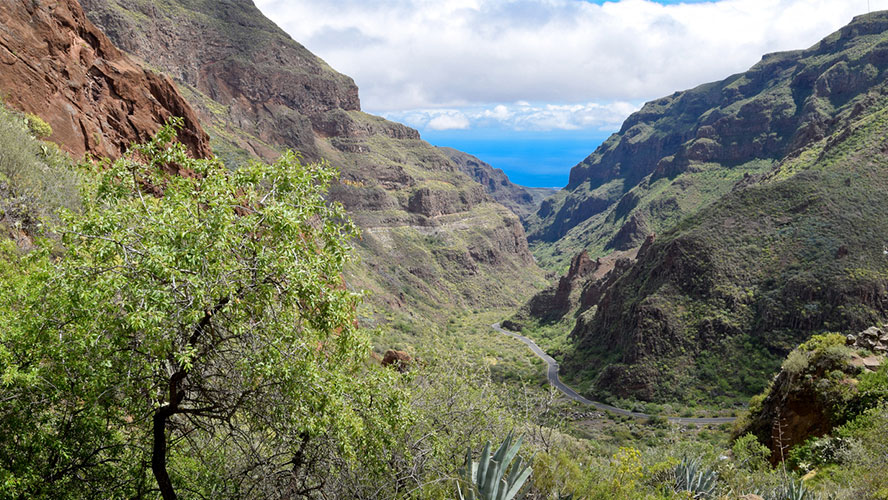
Discovering the Guayadeque Ravine
Hiking is a great way to discover the ravine. There are several marked trails to pick from but the most popular is the Guayadeque Ravine circular pathway. This is a moderately strenuous hike, with several long, steep sections. It takes approximately four hours to complete. If you are travelling with children or elderly persons, you can do part of the journey by car.
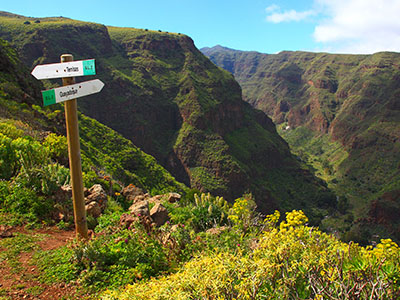
Stop in at the Guayadque Ravine Interpretation Centre, located at the very beginning of road GC-103. It offers wonderful insights and exhibits explaining the history of human activity in the valley. From there, take the winding road up to Montaña de las Tierras, a rocky massif with the most breathtaking views, and the last area accessible by car. The last 7 km to the visitor’s centre can only be completed on foot. Once you reach the end of the trial, you need to undertake the last uphill climb to reach the incredible Los Marteles crater.
The cave dwellings of the Guayadeque
This ravine was home to the first settlers of the Canary Islands. The indigenous people of the island may have lived in caves on high grounds but their survival depended on the stream that ran at the bottom of the ravine. This stream was the only source of fresh water on the entire island. Guayadeque can be roughly translated to ‘the place where the water runs’ and is one of the most important archaeological sites of the Canary Islands. The artefacts that were discovered are on exhibit at the Canarian Museum.
The hundreds of caves that make up the nature reserve were used by the indigenous people as shelter. However, the tradition of living in the ravine is still very much alive and several people continue to make their home in cave dwellings, high up at the top of the ravine. Access to these houses is not for the fainthearted: you need to hike up steep paths and climb ladders. However, the views the climb affords of the ravine are well worth the effort. Once you reach the top, you can also explore the tiny chapel of Guayadeque, built into the rock, and a popular location among locals for wedding celebrations.
But that’s not all. You can also live a unique experience by spending a night at a cave hotel. It’s difficult to make them out at first sight since they are so well integrated into the landscape of the ravine, but though they offer modern facilities they still preserve the traditional essence. You’ll be able to fully appreciate the beauty of the ravine at all times of day. Casa Cueva Canaria is a tiny craft shop located in a cave dwelling at the end of the road. Even if you aren’t looking to buy anything, we do recommend you stop by and have a peek at the vibrantly decorated shop and its unusual architecture.
Cave restaurants in the Guayadeque Ravine
The advantage of caves is that they offer the best ambient temperature: warm during the wintertime and cool during the summertime. When the first cave bars opened, they only served unfussy snacks and drinks, such as crisps, olives, cheese and wine. Today, there are five, rustic-style restaurants offering a unique dining experience; some even offer sweeping views of the Guaydeque. Be sure to try the cochino a la sal (salt-baked pork).





























































